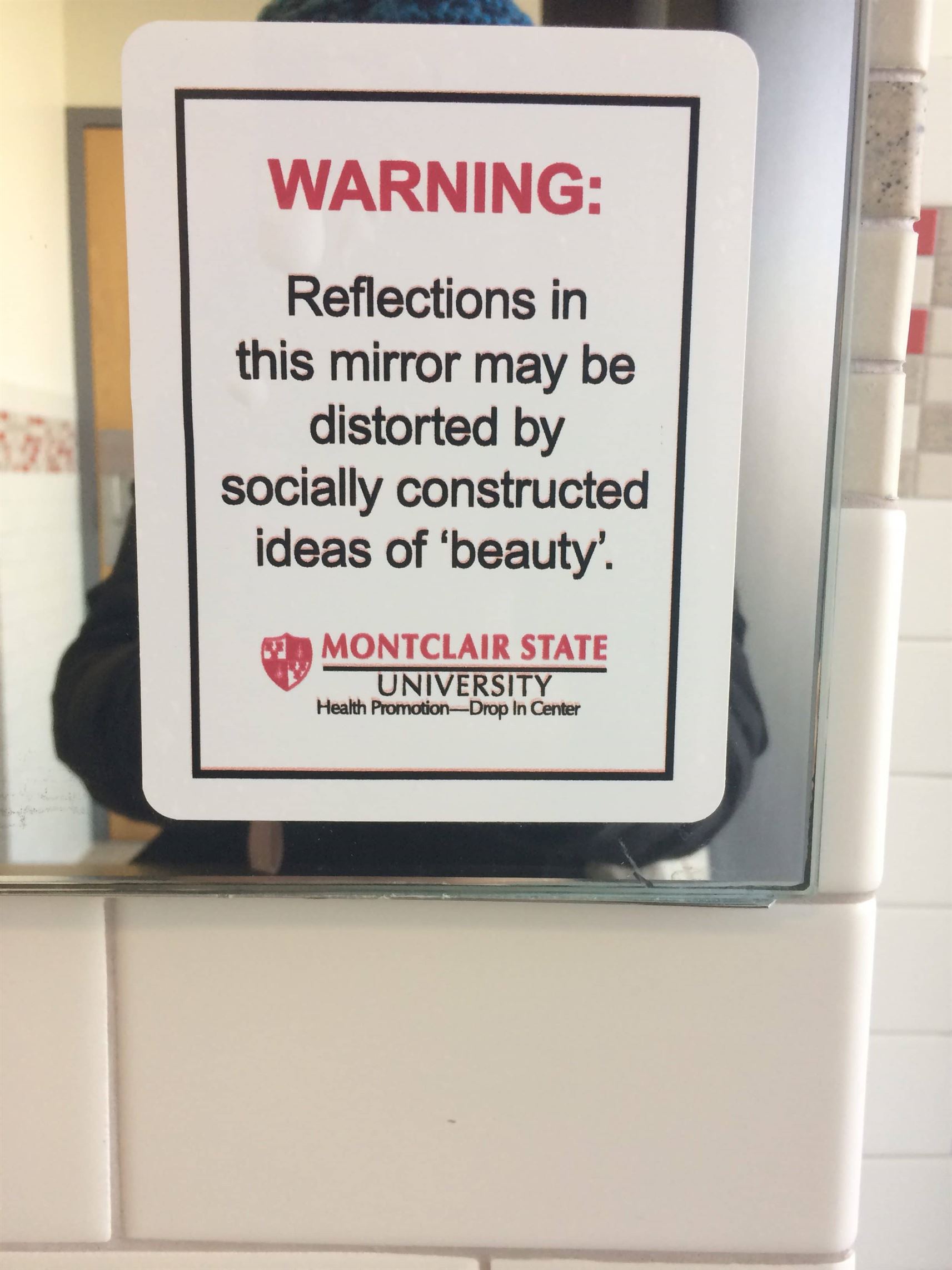They say beauty is in the eye of the beholder. Yet, who is the beholder of one’s beauty? The answer is meant to be different for everyone. However, on my recent stop to the women’s restroom in the Student Center, I revisited that phrase once more.
On the mirror’s right hand side, there is a sticker that gives students a warning. It reads, “Warning: Reflections in the mirror may be negatively affected by socially constructed ideas of ‘beauty,’” along with the Montclair State University logo. While it is a small sticker, the message behind it is both clear and powerful. My initial reaction was to look at myself in the mirror, and re-evaluate what I had thought all along.
Yet something felt wrong. I suddenly began to examine my reflection even more closely. I probed my hair, height and freckled skin as if something negative lurked underneath my perception. Then, the truth of its message had sunk in. Beneath the empowering first glance, I realized they were not “socially constructed ideas of beauty.” The beholder of beauty was society and its failure to reconstruct them.
Women at Montclair State have probably seen many of these stickers on mirrors in the bathrooms on campus. While they are likely meant to boost self-esteem, it still raises some questions. Is society’s impact on beauty so strong that students have to be warned to find beauty in themselves? If they are meant to warn students about their reflection, how can we find the proper one? One sticker cannot answer all these questions, but it can be a start.
Finding the proper reflection is hard, and finding a reflection based on “positively affected” ideas from society can be wrong as well. The best way to define beauty is by finding its core definition. I decided to research the term in the Merriam-Webster and Oxford dictionaries. Both define beauty in slightly different, but important ways.
Merriam-Webster defines beauty as “the qualities in a person that gives pleasure to the senses…loveliness.” It uses an example of “a woman of great physical beauty.”
However, Oxford defines it as “a combination of qualities, such as shape, colour or form that pleases the aesthetic senses, especially the sight.” What is most striking is its second definition, which is “a combination of qualities that pleases the intellect.”
When comparing the two, Merriam-Webster seems to defines beauty as more of a person’s physical characteristics. Oxford, on the other hand, defines it as a way of being. Beauty has color and shape that pleases one’s eyes. Beauty has more depth than its own reflection. It also has intellect. One’s beauty can be their brains, artsiness, talents or even heart.
To conclude, our society is in need of reconstructing beauty. We can heed the warning signs and stray away from the dangers of misleading “socially constructed ideas.” Yet, at the end of the day, students can still face these mirrors and try to find what truly makes them beautiful. There are no road maps to find it, and society cannot even define it.
The answer is beyond the reflection in the mirror. Women and men are the beholders of their own individual beauty. Whether it is your kindness, brains, body, eyes, guitar chops or home runs, your beauty is defined by you. It reflects not only in mirrors, but in our words, actions and the people we touch. That is a principle we can carry with us here and after graduating Montclair State.



